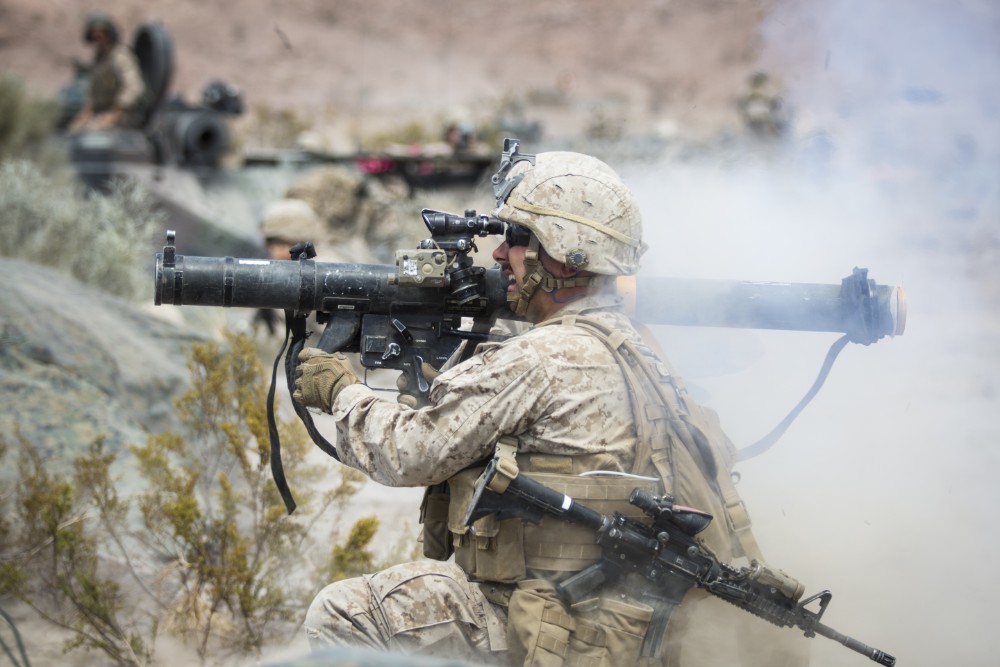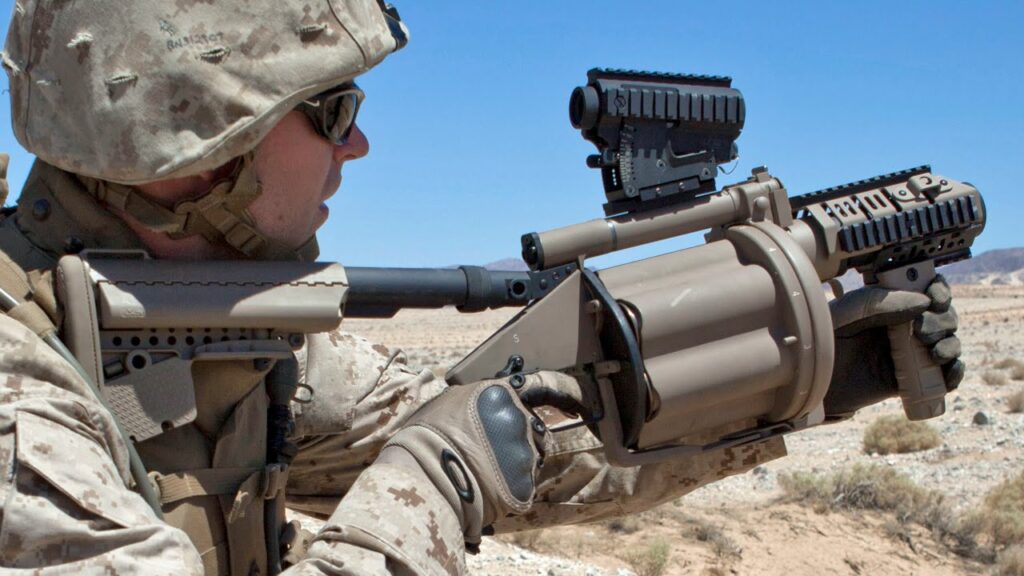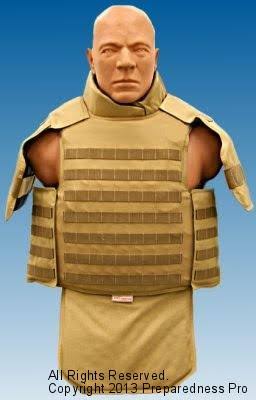If you’re a millennial gun nerd, you probably grew up watching shows like Future Weapons. I loved Future Weapons, and I watched every episode, growing up listening to Navy SEAL Richard ‘Mac’ Machowicz tell me all about the future of military firearms. Mac passed away in 2017, and before we dig into the Future Weapons catalog, I want to wish Mac and his family fair winds and following seas.
Thank you for reading this post, don't forget to follow and signup for notifications!
Today we are going to examine seven of the weapons showcased on Future Weapons and discuss where they are now.
- The IMI Tavor TAR-21
- The MK 153 SMAW-NE
- The M32 Multiple Grenade Launcher
- Magpul Masada Assault Rifle
- The Metal Storm
- Beretta LTLX7000
- Dragon Skin Armor
- The End of Future Weapons
Mac introduced this weapon as an assault rifle designed for soldiers of the 21st century. The Tavor series was designed to replace the M4 and M16 series in the Israeli military. Israel is a largely mechanized force that faced warfare in urban environments. A bullpup makes a lot of sense.
Advertisement — Continue Reading Below

The rifle used a long-stroke gas piston, similar to the AK and M1 Garand series. The rifle was found to be extremely reliable and easy to shoot. It was exported and adopted by numerous military forces around the world. I’m low-key jealous the Ukrainians got a 5.45 model that used AK mags.
Mac famously said it matched the firepower of the M16 but was as accurate as a sniper rifle. That’s a bit of an exaggeration, but the rifle has proven to be quite capable. The Tavor served Israel well, but as we’ve more recently observed, the Israeli military seems to be shifting to the M4, and the Tavor is fielded by armor and artillery crews.
Advertisement — Continue Reading Below
The Tavor is, without a doubt, one of the most successful weapons showcased on Future Weapons.
The MK 153 SMAW had been in service for 20 years when Mac got his hands on one. Mac reviewed the SMAW-NE, an advanced version of the SMAW firing the Novel Explosive rocket. The SMAW was the anti-armor and, well, anti-everything option of the United States Marine Corps. The new NE warhead was designed for urban warfare and for taking out entrenched troops in urban environments.

Advertisement — Continue Reading Below
The NE rocket would be fired into a building and create an extreme amount of damage inside, which would liquefy insurgents and eliminate snipers, machine gun nests, and more. The NE rocket worked and became a bit legendary in the Marine Corps, although the SMAW itself was detested. It was heavy, awkward, and the spotting rifle is supposed to be semi-auto, but was basically a jam-o-matic.
The SMAW-NE worked, and the SMAW worked enough so that the Mk 153 MOD 2 was adopted in 2020 to reduce weight. The Marine Corps has since eliminated the Assault Man role in the infantry and has moved to utilizing the Carl Gustav launcher for anti-armor roles. Future Weapons has another success story on its hands.
As a fan of Future Weapons and a small-town dweller, I was shocked when Future Weapons showed up in my backyard to shoot the M32 multiple grenade launcher. Mac showed up in my small town at a local defense contractor to spew 40mm rounds. I like to think I heard him shooting, but who knows.
Advertisement — Continue Reading Below

The M32 was based on the Milkor MGL but produced right here in Florida. It’s a revolving grenade launcher that fired six rounds before needing to be reloaded. That’s five more rounds than the M203 that was fielded by Marines and Soldiers at the time. In the School of Infantry, I was proud to see my hometown stamped on M32s.
The Marine Corps adopted the M32, and I saw one in Afghanistan. The poor guy had to carry an M32 and an M4, but sometimes six grenades are worth the weight. The weapon also saw adoption by SOCOM. The M32 isn’t widely fielded, and FN’s new MTL-30 might be the replacement we need for a multiple grenade launcher. It was a limited success, but a success.
Advertisement — Continue Reading Below
It’s always crazy to me that so many people don’t realize that Magpul designed a rifle. The Masada was a huge story when it premiered in 2006. Magpul took four months to develop a modular, multi-caliber, next-generation rifle. This Future Weapons episode featured a goateed Chris Costa going over the Masada with Mac at the range.

The big trick of the Masada was its ability to easily swap between calibers via a quick-change barrel. The Masada promised ambidextrous controls, a folding and collapsing stock, and a short-stroke gas piston operation. Magpul licensed the design to Bushmaster, who developed it into the ACR.
Advertisement — Continue Reading Below
The ACR was cool…in Modern Warfare 2. In reality, Bushmaster ballooned the price to three grand, and there was a recall early in its production. Conversion kits were slow to show, if they ever showed at all. Bushmaster went bankrupt with Remington, but was purchased, and there have been consistent rumors that the ACR would return, but that hasn’t happened yet. I think the ACR is a total failure, and therefore, the Masada is a failure.
The Metal Storm series featured electronically initiated, stacked projectile weapon systems that fired caseless ammunition. The idea was that this system would allow for an incredible rate of fire. The 36-barrel Metal Storm volley gun boasted the highest firing rate in the world, capable of firing a million rounds per minute. These guns had no moving parts for cycling and seemed utterly fascinating. Metal Storm produced smaller variants of the same technology.

This includes the five-shot MAUL shotgun that could attach under the barrel of an assault rifle. The US Army showed some interest in this concept, but it went nowhere. The inability to easily reload fixed-stack ammunition made the weapon difficult to use operationally, and there was limited need for a volley gun.
The Metal Storm company entered bankruptcy in 2012 and went defunct. The technology was purchased by DefendTex; it doesn’t seem like it’s done much since. It’s a failure to be sure.
The Beretta LTLX7000 was part of a special, less-lethal episode of Future Weapons. The Beretta LTLX7000 is a dedicated less-lethal shotgun that has the ability to adjust a projectile’s impact based on the distance to the target. Less-lethal isn’t non-lethal, so being able to reduce the velocity would minimize lethality.

The Beretta LTLX7000 did this through a massive proprietary sighting system that was directly connected to a system of internal valves. These would be able to change the impact force and provide a truly less-lethal, lower-threat option for those applications. It was initially developed for the Italian military but would have applications globally.
Sadly, this high-tech shotgun never left the development phase. It was not fielded, and with the move to 40mm less-lethal rounds, it’s unlikely the gun will ever see the light of day. It’s high-tech, fascinating, but also a failure.
My last pick is a wild card because it’s not a weapon. Instead, it’s a body armor system. Dragon Skin armor promised more protection than standard military body armor. The armor’s name came from the stacked plate system that resembled scales. Dragon Skin promised multi-hit functionality and claimed it allowed individuals more maneuverability for the end user.

Mac shot it with an AK, an M4, and a 9mm, and it held up to the abuse. The most famed test was Mac strapping Dragon Skin to a ball dummy and placing it on a live fragmentation grenade. He blew it up, and frag didn’t penetrate the vest. It seemed great, right? Soldiers purchased Dragon Skin; I had a buddy saving up for it in 2008.
Then it was revealed that the glue holding the ceramic scales would fail, and fail badly. The plates would accumulate in the vest, leaving huge gaps in protection. The military banned it quickly, prompting some backlash, but ultimately it was the right decision. This was a massive failure, and Dragon Skin disappeared.
Future Weapons lasted three seasons, and there were 29 episodes covering everything from rail guns to tanks. It’s fascinating to see the ideas taking place in the early GWOT and what the future held for Future Weapons.



